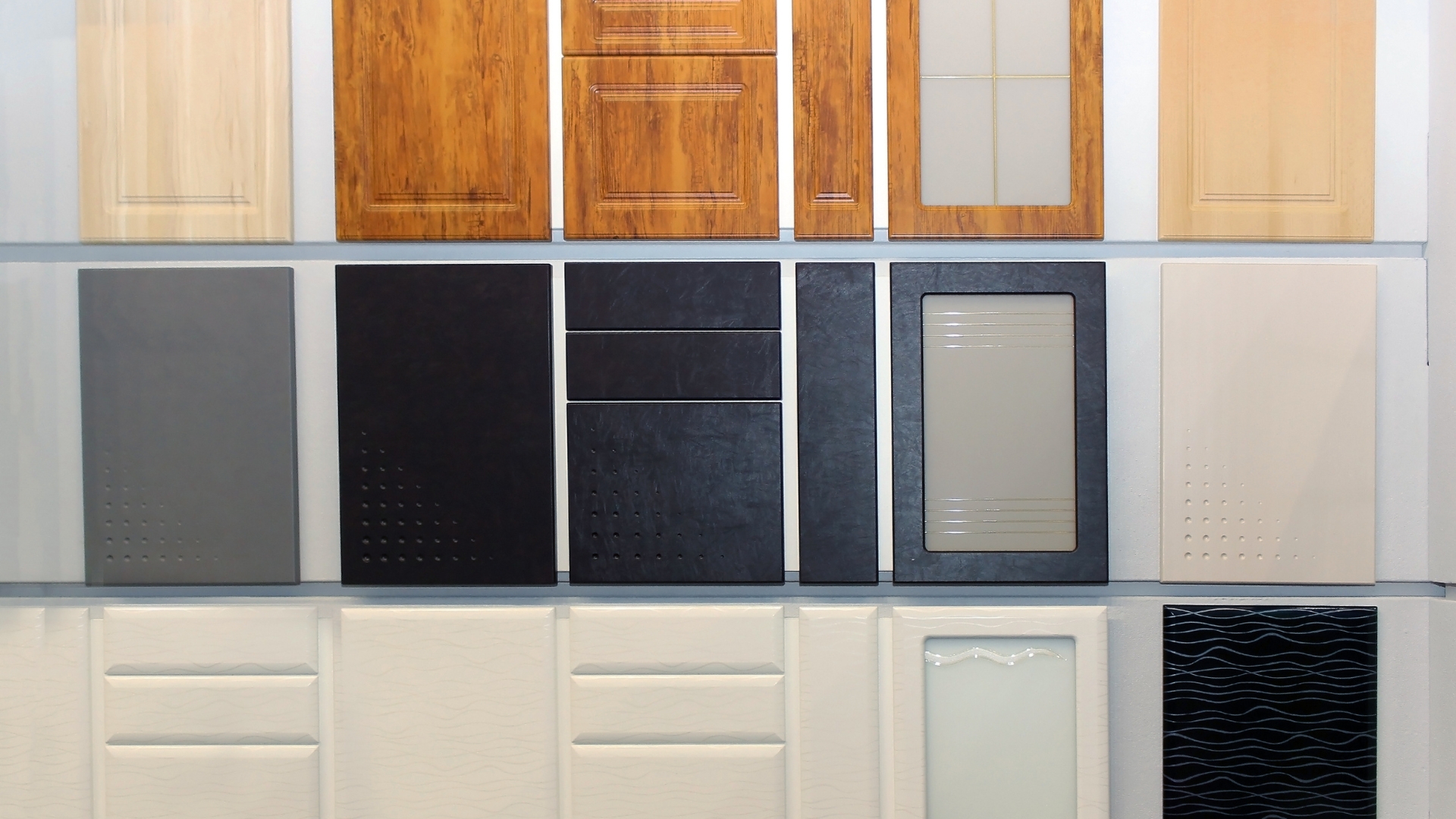Kitchen cabinets are the backbone of any well-organized and functional kitchen. These essential storage units serve both practical and aesthetic purposes, providing a place to store cookware, dishes, food, and more while also contributing to the overall look and feel of your kitchen.
Whether you’re planning a kitchen remodel or seeking to make the most of your existing space, understanding kitchen cabinets is a crucial aspect of kitchen design and functionality.
Note: Get Your Ultimate Kitchen Cabinet PDF Below.
Small Kitchen Cabinets
Small kitchen cabinets are a crucial element in compact kitchen spaces, where efficient use of every inch is essential. These cabinets are designed to maximize storage and organization in limited areas while maintaining the functionality and style of a larger kitchen.
They come in various designs, such as wall-mounted, base, and corner cabinets, and can be customized to fit your specific small kitchen layout. Small kitchen cabinets are essential for keeping your kitchen tidy and ensuring you have everything you need within reach, even in the most space-constrained kitchens.
Standard Kitchen Cabinet Sizes Chart
Standard kitchen cabinet sizes provide a helpful reference for planning and designing your kitchen space. While specific dimensions may vary by manufacturer and region, here is a general chart outlining standard kitchen cabinet sizes:
Base Cabinets:
- Base Cabinet Height: 34.5 inches (87.6 cm)
- Depth: 24 inches (61 cm)
- Width Options: Typically range from 12 to 36 inches (30.5 to 91.4 cm) in 3-inch (7.6 cm) increments
Wall Cabinets:
- Wall Cabinet Height: 30 inches (76.2 cm) or 42 inches (106.7 cm)
- Depth: 12 inches (30.5 cm) or 24 inches (61 cm)
- Width Options: Typically range from 9 to 48 inches (22.9 to 121.9 cm) in 3-inch (7.6 cm) increments
Pantry Cabinets:
- Pantry Cabinet Height: Typically matches the height of your wall or base cabinets, e.g., 84 or 96 inches (213.4 or 243.8 cm)
- Depth: 24 inches (61 cm)
- Width Options: Usually range from 18 to 36 inches (45.7 to 91.4 cm)
Tall Oven Cabinets:
- Tall Oven Cabinet Height: Matches the height of your wall or base cabinets, e.g., 84 or 96 inches (213.4 or 243.8 cm)
- Depth: 24 inches (61 cm)
- Width Options: Typically 30, 36, or 48 inches (76.2, 91.4, or 121.9 cm) to accommodate oven and microwave units
Corner Cabinets:
- Corner Base Cabinet: Diagonal corner base cabinets are typically 36 inches (91.4 cm) wide on each side.
- Corner Wall Cabinet: These are also typically 36 inches (91.4 cm) wide.
Keep in mind that these are standard dimensions, and custom or semi-custom cabinet options allow for more flexibility to fit specific kitchen layouts.
When planning your kitchen, it’s essential to consider the layout, appliances, and your personal storage needs to choose the most appropriate cabinet sizes and configurations.
Kitchen Cabinet Plans
1. Measurements:
Start by measuring your kitchen space accurately. Note the dimensions of the walls, ceiling height, and any obstructions like windows and doors.
2. Layout and Design:
Sketch or use design software to create a layout of your kitchen. Plan the placement of cabinets, including base cabinets, wall cabinets, pantry cabinets, and any specialty cabinets.
3. Cabinet Dimensions:
Specify the dimensions for each type of cabinet you intend to use, including height, depth, and width. Ensure these measurements fit your available space.
4. Cabinet Style and Finish:
Decide on the style and finish of your cabinets, whether it’s modern, traditional, or something else. Choose the material, color, and hardware for your cabinets.
5. Appliance Placement:
Plan the location of appliances like the refrigerator, oven, and dishwasher, and ensure your cabinets accommodate them properly.
6. Storage Solutions:
Consider your storage needs and incorporate features like pull-out shelves, lazy Susans, and built-in organizers to optimize cabinet space.
7. Countertops:
Specify the type and color of your countertops, and ensure they complement your cabinet choices.
8. Lighting:
Plan for under-cabinet lighting to illuminate your workspace effectively.
9. Electrical Outlets:
Include the placement of electrical outlets for small appliances and devices within or beneath the cabinets.
10. Ventilation:
Plan for proper ventilation, especially if you have a range or cooktop installed within or under cabinets.
11. Backsplash:
Determine the style and material of your kitchen backsplash, as it should complement your cabinet design.
12. Plumbing:
Ensure that any plumbing for sinks or dishwashers is correctly planned and accommodated by your cabinet layout.
13. Cabinet Installation:
If you’re installing the cabinets yourself, include detailed instructions and a timeline. If you’re hiring professionals, specify your requirements.
14. Budget:
Keep track of the estimated cost for your cabinet plan, including materials, labor, and any additional features or upgrades.
15. Timeline:
Create a timeline for the cabinet installation and kitchen remodeling project, including start and completion dates.
16. Review:
Review your cabinet plans with a designer or contractor to ensure that they are feasible and meet your needs.
Creating comprehensive kitchen cabinet plans will help you bring your dream kitchen to life.
These plans serve as a blueprint for your kitchen renovation, guiding you through the entire process, from design to installation.
Free Kitchen Cabinet Plans
Many websites and resources offer free kitchen cabinet plans for DIY enthusiasts. Here are some places where you can find free kitchen cabinet plans:
- Ana White’s Website: Ana White provides a wide range of free woodworking plans, including kitchen cabinet plans. Her step-by-step tutorials and detailed diagrams make it easy for beginners and experienced woodworkers alike.
- The Spruce Crafts: The Spruce Crafts offers a collection of free cabinet plans, including kitchen cabinets. These plans often come with detailed instructions and illustrations.
- Instructables: Instructables is a platform where people share DIY projects, including kitchen cabinet plans. You can find a variety of cabinet designs and styles with step-by-step guides.
- Woodsmith Plans: Woodsmith offers a selection of free cabinet plans, and their plans are known for their quality and precision. You may find some kitchen cabinet plans in their collection.
- DIY Network: DIY Network provides free kitchen cabinet plans and tutorials. These plans are accompanied by photos and detailed explanations.
- The Family Handyman: The Family Handyman offers a range of DIY projects, including kitchen cabinet plans. You can access their plans for free, and they often include illustrations and cutting lists.
When using free kitchen cabinet plans, ensure that the plans are well-detailed and match your skill level and equipment.
Be prepared to adapt the plans to your specific kitchen space and design preferences. Always follow safety guidelines and use appropriate tools when working on DIY projects.



